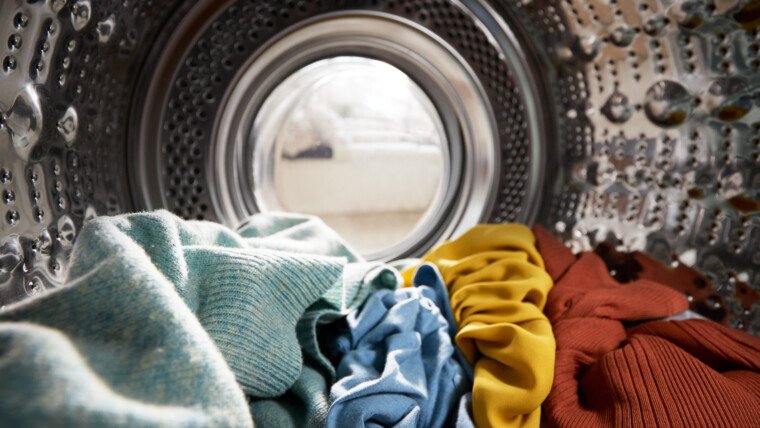Understanding Clothing Care Symbols
Clothing care tags serve as indispensable guides, providing vital information through a variety of symbols that indicate appropriate care methods. These symbols are categorized primarily into four areas: washing, drying, ironing, and professional textile care. Each symbol is designed to convey specific instructions, ensuring that garments maintain their appearance and longevity.
The washing symbols typically feature a basin filled with water, indicating the maximum water temperature suitable for the fabric. For instance, a symbol with a number inside the bowl signifies the maximum temperature for machine washing. A symbol with a hand indicates that the item should be hand-washed, which is particularly important for delicates. Additionally, a crossed-out symbol or a dot inside the basin may indicate the use of gentle cycles or the need to avoid washing altogether.
Drying symbols can be found as a square with a circle inside it, representing tumble drying. The dots within the circle indicate the heat settings permissible for drying. For example, a single dot denotes low heat, while two dots mean medium heat. In contrast, a crossed-out circle signifies that the garment should not be tumble dried, emphasizing air drying as a more suitable approach.
Ironing symbols, represented as triangles, provide guidance on the heat settings appropriate for smoothing wrinkles. The number of dots within the triangle dictates the necessary temperature, helping to avoid fabric burns. A crossed-out symbol is a clear indication that ironing should be avoided entirely, preserving the integrity of the material.
Lastly, professional textile care symbols advise on specialized cleaning methods, such as dry cleaning. These instructions often involve a circle with a letter inside, specifying the type of solvent permissible in professional cleaning. Familiarizing oneself with these clothing care symbols enables laundry delivery customers to take the necessary steps to keep their garments in pristine condition, ultimately extending the life of their clothing.
Washing Instructions: How to Protect Your Fabrics
Understanding the washing instructions on clothing care tags is essential for anyone using a laundry delivery service. These tags often contain crucial information, primarily regarding water temperature, wash cycle types, and hand-washing guidelines. Adhering to these instructions can significantly prolong the life of your fabrics and prevent unwanted damage or shrinkage.
When it comes to water temperature, you will typically find categories such as cold, warm, and hot. Cold water is often recommended for delicate fabrics and dark colors to prevent fading. Warm water, on the other hand, is suitable for a broader range of fabrics, including cotton blends, while hot water may be necessary for heavily soiled items or whites. Understanding these temperature specifications is critical to maintaining the integrity of your garments.
The wash cycle type also plays a vital role in fabric care. Common options include delicate, permanent press, and regular cycles. Delicate cycles are designed for lighter, more fragile fabrics and utilize less agitation, thereby reducing the chances of wear and tear. Permanent press cycles, which usually incorporate a cool-down period at the end, help to minimize wrinkles, making them ideal for synthetic blends. Regular cycles are best for sturdier fabrics that can withstand more vigorous washing. Be sure to instruct your laundry delivery service on the appropriate cycle for each item, as they can adjust settings based on care tag recommendations.
Hand-washing is often suggested for the most sensitive fabrics. If a care tag indicates this method, consider soaking the item in cold water with mild detergent and gently agitating it by hand. Rinse thoroughly and air-dry to avoid any potential damage. Ensuring that these washing guidelines are followed, either by you or your laundry service, is paramount in preserving the quality of your clothing. Taking these steps will help maintain your fabrics, keeping them looking fresh and new for a longer duration.
Drying Instructions: Best Practices for Different Materials
The drying instructions provided on clothing care tags are crucial for maintaining the integrity and longevity of garments. These tags often recommend one of several drying methods, each suited to specific fabric types. Understanding these instructions ensures that clothes remain in excellent condition following laundering. The primary drying methods include tumble drying, line drying, and air drying, and each has its respective best practices.
Tumble drying is a common practice, especially for durable materials such as cotton and polyester. However, it is imperative to follow temperature settings as indicated on care tags. For instance, delicate fabrics like silk or lace should never be tumble dried, as the heat can cause irreversible damage. Instead, line drying is often recommended for these more fragile fabrics. This method not only reduces wear but also helps to retain the natural shape and texture of sensitive garments.
Air drying is another efficient method, suitable for a wide range of materials, including wool, which can shrink if exposed to heat. Hanging clothes to dry can prevent stretching and help garments maintain their fit and form. It is advisable to dry these materials away from direct sunlight to prevent color fading. For laundry delivery services, understanding customers’ preferences for drying methods is vital. Many services can accommodate specific instructions, ensuring garments are dried appropriately based on fabric types.
Incorporating proper drying techniques according to care tags is fundamental in garment care. With a clear understanding of how various materials should be dried, customers can be assured their clothing remains in optimal condition, allowing them to enjoy their items for an extended period. Therefore, heeding the guidance on care labels—whether it be for tumble, line, or air drying—is essential.
Ironing and Professional Care Symbols: Ensuring Optimal Maintenance
Understanding the symbols associated with ironing and professional care is essential for maintaining the appearance and longevity of clothing. Ironing symbols indicate the appropriate temperature settings that should be employed based on the fabric type. The most recognized symbols include a single dot for low heat, two dots for medium heat, and three dots for high heat. For example, synthetic fabrics typically benefit from low heat, whereas cotton and linens can withstand higher temperatures. Failing to adhere to these temperature guidelines can result in fabric damage, such as burns or shrinkage.
In addition to temperature settings, various clothing labels may feature instructions regarding the ironing process itself. For instance, some garments might require ironing while damp, while others specifically advise against ironing at all. The use of steam is often recommended to reduce wrinkles effectively without causing harm to the fabric structure. Familiarizing oneself with these specific guidelines allows for optimal maintenance of clothing and can significantly enhance the overall appearance of garments.
Moreover, professional care symbols play a vital role in the care of delicate items. The ‘dry clean only’ symbol is one of the most critical symbols to heed, as disregarding this instruction can lead to irreversible damage. Fabrics such as silk, wool, and certain synthetics often require this level of care to maintain their integrity and visual appeal. Engaging professional cleaning services provided by laundry delivery companies is a worthwhile investment for ensuring the proper maintenance of these delicate garments. Not only do these services utilize specialized equipment and knowledge, but they also offer convenience and peace of mind regarding the preservation of one’s clothing.




